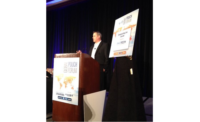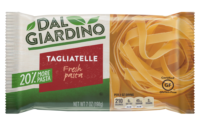Success or failure are rarely stand-alone events. More frequently, they’re products of some ongoing process. Triumph and disaster can occur with the introduction of a new product or a line extension of an existing product, and they can happen during the redesign of a legacy brand. Every problem — and by extension, every resolution — has its own unique set of circumstances. And time is of the essence. Here are a few universal thoughts to consider:
SIMPLE QUESTIONS. NOT-SO-EASY ANSWERS.
WHAT IS THE PACKAGE’S REAL REASON TO EXIST?
Seems obvious, right? Secure and safeguard the contents. There are many more answers to this question than merely a package’s primary mission to protect the integrity of the particular product. It’s an expression of the brand relationship with the consumer. It’s also a reflection of the psychological profile of the key customer. Influencers can include functional aspects like value, safety and portability. But, in many ways, issues that trigger human emotions can be even stronger in driving purchase intent and ultimately, long-term preference for a brand and why it should continue to exist. Addressing consumer concerns like environmental stewardship and use of renewable materials are just two examples.
WHICH PACKAGE IS THE RIGHT PACKAGE?
What was right several years ago may not be right for today’s consumer. What changed? It could be any number of things. Lifestyle for one. Convenience is another. Technology is a third.
Consider the yogurt category and the success of the low-fat yogurt brand designed specifically for kids, Go-Gurt®. Regarded by many to be a highly disruptive packaging success, it reinvigorated the yogurt category, one that was previously monopolized by cups of various shapes and sizes, sealed by a peel-off foil top. With the moms of America on the lookout for a healthy snack for their highly mobile young ones, Go-Gurt became an ideal portable solution.
Good product. Great packaging. To the casual observer, the final result looked simple and easy. But on its way to market, Go-Gurt had to overcome a variety of failures and problems. Achieving the proper viscosity of the squeezable yogurt was a major challenge and required numerous attempts to get the thickness just right. The packaging itself, originally based on frozen ice-pops, also had to overcome a series of design problems that included proper material composition, thickness and structural integrity. Each element had to be continually fine-tuned as the yogurt’s consistency changed.
WILL THE PACKAGING DELIVER ON EXPECTATIONS?
If there’s one thing the Go-Gurt story demonstrates, it’s that regardless of how good a product packaging idea is, there will always be failures along the way. And no matter how many are overcome, there always seems to be another one lurking nearby. One that continued to plague the brand was that of accessing the product. In solving the issue of child safety, they had made opening the tube so hard that kids had resorted to using scissors, creating safety problems. One success. One failure.
After numerous collaborations with their supply chain partners, Go-Gurt identified a new packaging material that resolved the problem. Delivering on the expectation of greater safety and easier opening, they named the new feature “EZ Tear Technology” and the new packaging “EZ Open Tubes.” They faced failure and fear and turned them into an opportunity to create a better packaging material and in the process, re-established consumer trust and loyalty.
NAVIGATING RISK, GLOBALLY AND LOCALLY.
Over the last four decades, T.H.E.M. has “Americanized” many disruptive packaging technologies from around the globe. We’ve supported brands, both international in scope and emerging ones, in developing and validating packaging that’s innovative and practical. For our company, it’s been a 46-year master class in dealing with failure, overcoming obstacles and being persistent in a quest to find the best packaging solutions. It’s not for the faint of heart. It endures only because of commitment.
Addressing these challenges, doing it by rapid development, and testing on a manageable scale were some of the foundational considerations of establishing our Commercialization Center and the range of resources it offers, from research and prototyping to testing and validation to production scale-up. The purpose is simple: Help brands navigate the myriad of paradigm shifts in the marketplace that are in full flight, overcome the challenges they pose, and most of all, defeat failure.
Among the trends that we’ve observed and have lasting potential are:
- Lifestyles that are increasingly mobile and focused on health and wellness. "I am an anytime consumer, BE AN ANYTIME PRODUCT."
- A preference for more environmentally-friendly product and packaging solutions. All else being equal, I’ll favor the Earth.
- More meals and smaller portions consumed in non-traditional settings.
- Hyper and hybrid shopping destinations, represented by retailers like Amazon, Wal-Mart, eBay and others.
WHY “REALISTIC RISK” ISN’T AN OXYMORON.
Taking all the factors into account, it really comes down to setting realistic expectations. Setting unrealistic ones are a recipe for repeated struggles and disappointment. And who wants more stress when you’re trying to overcome it in the first place? There’s always the likelihood that your first solution may not solve everything, but by applying a thoughtful, agile process, every effort becomes a learning experience that brings us closer to the final answer. A series of events meticulously coordinated by a brand team and its supply chain partners can deliver rapid results that are incrementally acceptable and take you from marginal satisfaction to ultimate solution.
For information on T.H.E.M. and services, visit them.net.






